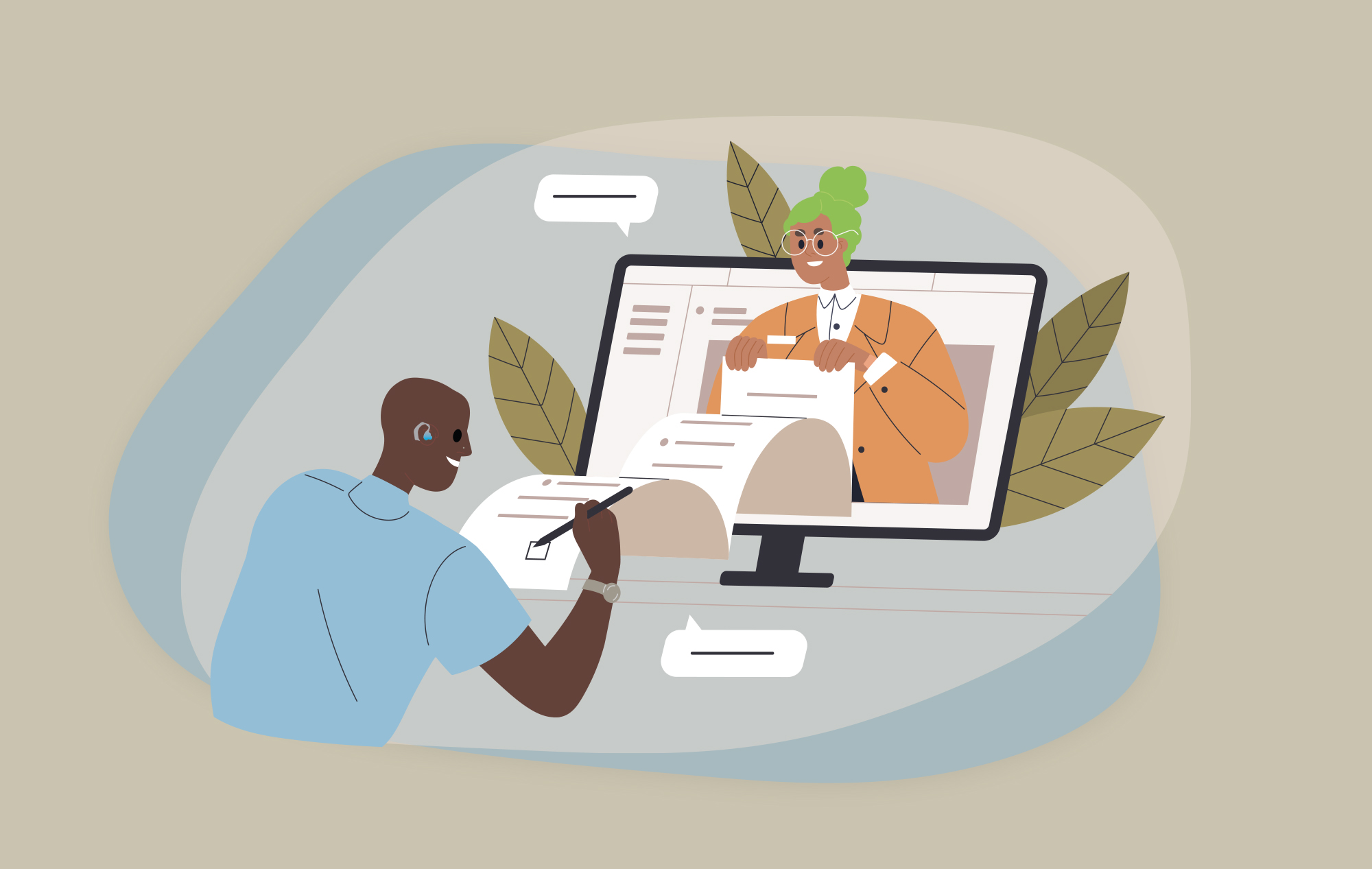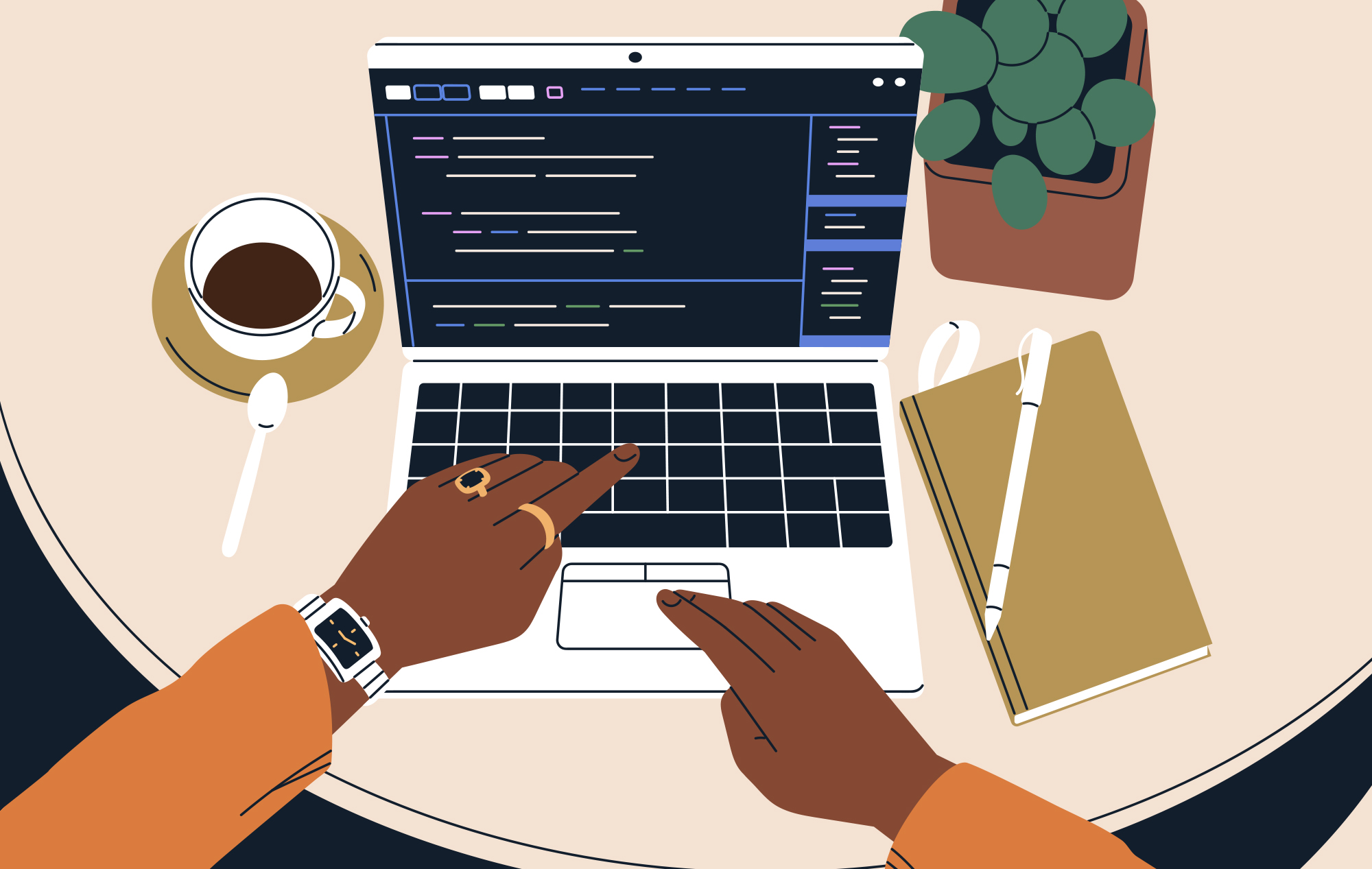More businesses and organizations are learning about the long history of discrimination people with disabilities routinely encounter in the corporate world.
In response, many are working to change that, whether it’s overcoming the digital divide, integrating Web Content Accessibility Guidelines on digital platforms, or building more inclusive workplaces.
So what can you do to make your interview process more inclusive?
Exclusionary Interview Practices During the Rise of Remote Work
Many businesses may be unaware of how exclusionary or inaccessible common interview practices are, especially as new norms regarding remote work have emerged throughout the past few years.
While telecommuting has expanded employment opportunities for professionals with disabilities, it’s also created new obstacles.
“This virtual world is actually really challenging for people with disabilities, specifically in the neurodiversity community,” says Jessica Roth, work manager in Salesforce’s Office of Accessibility. “I think that there's this preconceived notion that when you're interviewing, you're making eye contact, and you're really engaging. That's challenging for anyone to do right virtually, let alone someone who is neurodiverse.”
Additionally, less considerate video conferencing practices can undermine the interview process, as well.
“Another thing too is interview fatigue and interviewers having their cameras off,” Roth continues. “That's obviously really challenging for people in the d/Deaf and hard of hearing community if they read lips. The number one interviewer rule is to always have your camera on.”
In reality, keeping your camera on can benefit non-disabled peers, as well. For instance, it demonstrates a spirit of respect and interest in other people on a call, showing a sense of investment in the task at hand. As with many accommodations aimed to benefit professionals with disabilities, everybody else usually gains something positive.
One such practice is an “access check,” which Roth says has become common in her work at Salesforce.
“What we really like to do when we join meetings or interviews is do what we call an ‘access check,’ to make sure that your video and audio are clear for everybody,” she explains, adding that it’s an inclusive way to help everyone be aware of the needs of others, especially those who routinely encounter barriers to accessibility.
What Prevents Companies From Being More Inclusive of Professionals With Disabilities?
Inaccessibility and exclusion derive from a very straightforward assumption, according to Roth.
“I think there's a preconceived notion that people with disabilities don't belong in the workplace,” she shares. “Or that if people with disabilities are in the workplace, they're not working alongside non-disabled peers in large organizations.”
In addition to rejecting the misguided assumption that people with disabilities don’t belong in the workplace, Roth says the complicated nature of self-identification around disability status perplexes many organizations. This sometimes makes it difficult for organizations to determine how to best address accessibility concerns.
“There's really no way of recording and measuring it right,” she explains. “I'm on multiple roundtables with other companies similar to Salesforce in size and scope. And that's their biggest area of improvement: How do we get people with disabilities to self ID because the more self ID we have, the more we can invest in programs to enhance access for people with disabilities.”
It’s worth noting that while self-identification of disability status or asserting one’s accommodation needs can help organizations become more inclusive, especially for people with so-called “invisible disabilities,” businesses should be thoughtful in how they approach achieving this—careful not to pressure or put disabled peers into awkward situations.
Establishing an office of accessibility or inclusion initiative might help with that.
“I think that a lot of times people have the best intentions,” Roth says. “They just don't know what they don't know. So I think education is a really big key, enablement and education and really having someone on staff that employees or managers feel comfortable approaching to ask for tips on how to best help someone with a disability.”
She understands that “people are very timid and nervous to ask for help, because they don't want to say the wrong thing, so just creating that safe space is really vital.”
By creating a “judgment free zone” where “people feel comfortable being vulnerable and saying the wrong thing,” she believes workplaces can “really help drive more diversity in terms of people with disabilities within an organization.”
Attracting More Professionals With Disabilities
First and foremost, an inclusive interview process begins with accessibility, being sure job listings are posted where professionals with disabilities are going to see them.
According to Roth, Salesforce has partnered with Inclusively, a job platform dedicated to helping people with disabilities find gainful employment. Salesforce recruiters rely heavily on the platform.
“You can think of it as kind of Indeed or LinkedIn specifically for people with disabilities,” she says. “So as a person with a disability, if you go to the platform and sign up and create an account, you go through a multiple-page series of what are called ‘success factors’ of what you need from an accommodations perspective to be successful in the role.”
Roth argues that it helps recruiters set up a more accessible interview process for professionals with disabilities, as well as manage expectations for both employers and potential employees.
“It really kind of gets rid of that conversation that a lot of candidates aren't comfortable having at the beginning with a recruiter, and then the recruiter can set up those accommodations before the interview process even starts,” she adds. “We've had a lot of success with Inclusively.”
In addition to posting in the right places, job openings need to have the right language. However, crafting vocabulary for an inclusive job description to specifically appeal to people with disabilities requires a delicate approach. For instance, one must be aware of legal requirements and what can and cannot be included in any given region or country.
“In Italy, it’s actually legal to post roles only for people with disabilities,” notes Roth. “But you obviously can't do that in the U.S., Canada, Ireland, or England.”
Alternatively, she finds it can be beneficial to include a more general disclaimer highlighting your organization’s overall posture toward equality and inclusion.
“You can have a statement that says something along the lines of ‘We value equality for all’ or ‘Please bring your full self to work,’” says Roth. “Whether it’s race, gender, veterans, people with disabilities, or other intersectional language, you can name everything from underrepresented groups or minorities. That would be my recommendation.”
Notably, also asking applicants to fill out a form listing their needed accommodations can provide a powerful signal that an employer is serious about accessibility and inclusion.
A Competency Approach to Hiring
Ultimately, an inclusive interview or hiring process will focus on abilities while accommodating disabilities.
“The Salesforce interview process is all competency based,” Roth says. “So every role at Salesforce in every functional area has competencies that get sent out to the interviewers before the interview happens.”
She believes this helps avoid cultural hang ups or unconscious biases that may diminish the chances of a professional with disabilities being hired.
“There's no competency for being a good culture fit,” explains Roth. “So I think that moving towards a competency-based interview model is the most equitable because you're solely rating someone on the competency for the job, not external factors that you may or may not like about that person. It takes a lot of training, enablement, and a lot of resources to be built out. But I do feel as though that makes the most equitable hiring process.”
Salesforce is a founding partner of InclusionHub, a resource for digital accessibility, committed to helping businesses prioritize digital inclusion. Visit its a11y website to learn more.






Leave a Comment